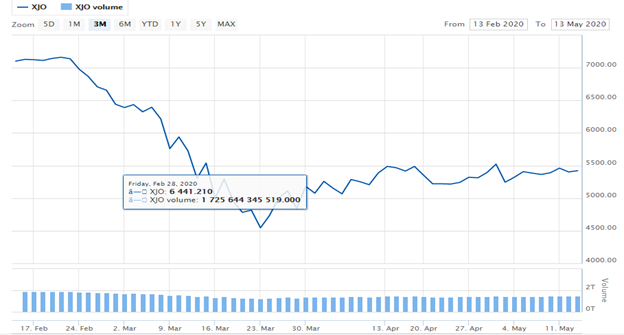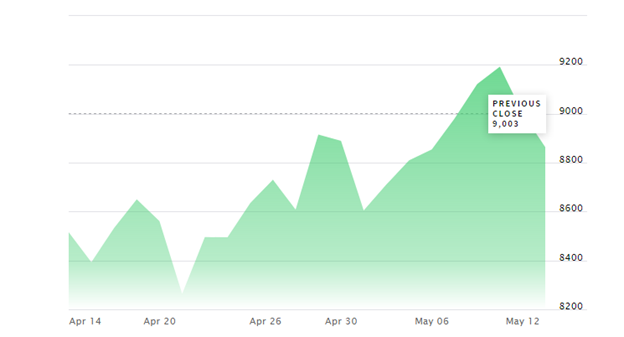The eagerness to shirk away the shackles of restrictions and breathing fresh air of freedom appears to be the critical elements of the deep-rooted desire in the current scenario. The world grappling with Covid-19 has now started witnessing their initial signs of recovery, evident in the action plans across the countries.
The volatile market conditions and the increasing unemployment rate created a decline in the demands. However, the hopeful signs are emerging amidst the dark clouds. Australian states are variably lifting restrictions to promote business operations while not compromising on the safety standards. If the situation pans out as planned, Australia could see its overseas students returning by July. Meanwhile, the country is in talks with New Zealand to recommence ‘Trans-Tasman’ Trade.
ALSO READ: 5 Reasons Why Australia Is Optimistic About Domestic Tourism
However, the period of the lockdown has caused insurmountable damage to the economy. Australian Treasurer Josh Frydenberg said that the GDP contraction is going to be more than 10% in the June Quarter. Meanwhile, the government’s stimulus package, which was to ensure cash flow in the economy has also caused the Federal deficit.
The dilemma persists between the signs of restoration and fear for the future. However, Australian Investors are not single headedly facing the baffling situation. The similar predicament is evident across the different stock markets, which are swinging between confidences and distrust.
A Budding Optimism: Ground Report from Global Scenario
The market movements on the stock front during May seem to mirror the changing global scenario and the situation of the respective countries. The optimism in the initial days of May translated into an upside trend in the different stock markets.
Meanwhile, the discussion surrounding the herd immunity has mushroomed as the countries with difficult pandemic situation seemed to be recovering. China, which was the first to be affected by Covid-19, stands as an exemplar for the world. Majority of the Chinese business operations have commenced.
The prospects for anti-coronavirus drug or vaccines provided a fresh dose of optimism. WHO spokesperson Margaret Harris concerning the Covid-19 treatments talked about “potentially positive data” which brings some affirmative hopes for the world struggling to get rid of the pandemic.
The Covid-19 global scenario indicates that the different countries lie at varying stages of the pandemic. While the infection rate for the countries that experienced early outbreaks have dropped, the newer ones are experiencing a rise in the infection.
Countries that Dodged the Pandemic Severity: Australia and New Zealand
Australia and New Zealand, on the other hand, did an impressive job in containing the virus through their swift preventive measures. The island nations are utilising the phased approached to economic reopening. New Zealand has enforced a Level 2 alert, which would see restaurants and cafés offering dining services to a limited number of customers.
The stock’s rally was evident in NZ stock market from 1 May to 12 May as the NZX 50 Index climbed by around 3.5% during the period.
Likewise, the different states in Australia are moving at their pace of opening, considering the Covid-19 scenario. Australian PM, Scott Morrison hinted on the reopening of the Australian economy. Australian Treasurer Josh Frydenberg said, “GDP will increase by $9.4 billion each month”, which pinpoints the upside potential of economic reopening.
The signs of economic recovery in the Australian continent as the S&P/ASX 200 rose by 3.35% between 1 May to 13 May 2020.

Source: ASX
Recovering from Severe Crisis: Europe and the US
The tapering infection rate across European countries such as Italy, Germany, Turkey is indicative of the light at the end of the tunnel. Meanwhile, the new infection rates in the US, UK are appearing to level off.
Germany is planning to ease border restrictions for the neighbouring countries-France, Austria, and Switzerland from 15 May 2020. It will promote travel while would also kick-start the economic activities between the nations.
ALSO READ: 3 Countries leading the COVID-19 race: Key takeaway for the others
European shares demonstrated positive trajectory with the improving US-China talks, which is garnering positive prospects. STOXX Europe 600 rose by around 3.7% between 4 May to 12 May. In the same period, the FTSE 100 Index of the UK climbed by over 4%, reflecting the growing confidence among the investors.
US president, Donald Trump also highlighted optimism in economic recovery and pressed for reopening of the schools. The US Federal Reserve kick-starting its corporate bond program was said to start buy Debt ETFs from 12 May 2020. The program focussing on investment-grade debts comes as a considerable market relief and is expected to raise the investor’s sentiments.
Between 1 May to 11 May 2020, US Nasdaq Composite rallied successively rising by around 7% while the Dow Jones Industrial Average Index gave approximately 2% return.

Source: NASDAQ
Optimism Amidst Fallouts: Countries with Growing Covid Numbers
At the same time, populous countries like Russia and India see a steep rise in the infection rate. However, the ameliorating global conditions are acting as a harbinger of glad tidings even for countries that are in the initial stage of infection.
While everyone yet keenly eyes the future movements, the reopening of the major economies, the improvement in the infection rate and prospects for vaccine was seen as prominent signals to the world investors.
The Concurrent Market Pessimism
Recovering economic signs with the lifting of restrictions appears to be colliding against the fear for the second wave of infection. China, which resumed its commercial activities, has started to witness new cases, adding to the woes of the world.
Meanwhile, the statements from the US experts have inflicted a double strike to the investor’s confidence. As many states start reopening, US top health expert, Dr Anthony Fauci, warned of the risk of ‘triggering the outbreak’ which might cause severe distress to the economy and health. Meanwhile, the US President termed the warning as “not an acceptable answer”. However, the investor’s apprehension might increase with Covid-19 case in the White House.
Federal Reserve Chairman Jerome Powell warned of an extended crisis in the US as he stressed the need for more Government aid. Powell indicated towards the impact of the stretched recession period forebodes the pandemic to be threatening the US productive capacity. The low demand emerging due to the job losses, lockdown restrictions and conservative ideology amidst uncertainty has decreased inflation in the country.
The world market reverberated the sentiments of Powell’s remarks as the stock witnessed downtrends. US Dow Jones Index, as well as Nasdaq Composite, fell by 1.55% on Wednesday. After the stock rally on Wednesday, Australian Securities Exchange also saw downturns as S&P/ASX 200 fell by 1.72% on Thursday, triggered by the fear of infection rise on economic reopening.
Bottomline
The exaggeration of the real-world scenario on the stock market is apparent, given the volatility and uncertainty of the current situation. The stocks’ movement in the future would primarily be guided by the level of control on the pandemic. Moreover, the development of anti-coronavirus is keenly eyed as it is expected to positively steer the investors’ sentiments.




